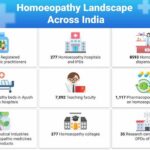Autor: Dr. Jaswant Singh Puri, Doctor of Letters (Honoris Causa), Social Activist, Punjab Rattan, Member, Dewan Family,, Erstwhile Princely State of Patiala
India
healtyysoch
Chandigarh, January 29, 2023:
World leprosy day, a global health care event is hosted on the last Sunday of January every year. This year, the day falls on 29 January. In India, it is observed on 30 January every year coinciding with the Martyrdom Anniversary of Mahatma Gandhi. Gandhi was also committed deeply to the cause of Leprosy.
The Leprosy Day was established in 1954 by French philanthropist Raoul Follereau. Its aim is to raise awareness and teach people about this ancient disease which is curable today.
Leprosy was renamed Hansen disease after Norwegian scientist Gerhard Henrik Armauer Hensen. He discovered in 1873 the slow-growing bacterium known as ‘Mycobacterium leprae’ as the cause of disease. It is difficult to catch it and it takes many years to develop the disease following an infection. However, people with this disease can be cured with antibiotics.
The theme of World Leprosy Day 2023 is: “Act now, end Leprosy” The theme calls for a
focus to three important messages:
- Its elimination is possible. We have the power and the tools to stop
- transmission and defeat the disease.
- There is a need for the resources and commitment to end Leprosy.
- There is a need to reach the unreached. Leprosy is preventable and treatable.
So leprosy is curable with a combination of antibiotics known as Multi Drug Therapy (MDT). There is a call to end leprosy related stigma and discrimination. The MDT therapy is available for free across the world. Since it is known to occur at all ages ranging from early infancy to very old age, its treatment in the early stages can prevent disability. The disease mainly affects the skin, the peripheral nerves, mucosal surface of the upper respiratory tract and the eyes.


“Although leprosy as a disease is known to be of ancient origin, it continues to be
prevalent even today. Mass realization regarding the important details of the disease is
vital for controlling its spread. It is crucial to detect leprosy at the earliest possible opportunity before the irreversible deformities and other visible lesions appear. In early cases, the administration of
effective treatment will revert the condition to the normal.
World Health Organisation (WHO) has been taking initiative to eliminate leprosy as a public health hazard and also launched a landmark campaign but the target is yet to be achieved. Various voluntary organisations and national health agencies are also working in this behalf.
There are mainly two types of leprosy. In the tuberculoid type, the earliest manifestation is the loss of sensation, and hair on a patch of skin. It is a good warning signal, and should alert those affected by it. The disease should be immediately suspected when one is in contact with a leper. However, in the other type of leprosy, called lepromatous leprosy, there is marked damage to the skin, leading to characteristic thickened facial features. Perforation of the nasal septum may occur in advanced cases. If leprosy is
suspected, the diagnosis should be immediately confirmed by taking biopsy or smear of the skin lesion/s for demonstrating Mycobacterium leprae (causative bacteria of leprosy). Other tests, like nerve biopsy, lepromin skin test, M. leprae PGL-1 (phenolic glycolipid I) etc., may also be required.
There should be no panic when a case of leprosy is diagnosed in a family. It is a curable condition, when the disease is diagnosed in its initial stages. Moreover, long contact with a patient of leprosy is required for the transmission of the disease.” Persons affected by Leprosy should be treated at par with other persons. People suffering with Leprosy should be educated by correcting misconception about the disease. There is
a challenge to raise awareness about the signs and symptoms of the disease and also tackle the stigma that surrounds it. The countries where Leprosy is non-existent, World Leprosy Day is marked by Churches, NGOs and Leprosy champions who assist in spreading awareness about the same.
This infectious disease has an incubation period of about five years but its symptoms of onset appear within one year. It may cause loss or decrease of sensation where the skin patches appear. Numbness or tingling in hands or feet takes place. Painless wounds on hands or feet call for a thorough diagnosis. Education about the disease and improved access to essential health treatment are important to eradicate the stigma associated with leprosy. World Health Organisation has published a technical guide “Leprosy/Hensen Disease: Management of Reaction and Prevention of Disabilities”.
There is Dr. Khushdeva Leprosy Colony in Patiala where doctors visit time to time, diagnose the patients and distribute free medicines. Dr. Khushdeva Singh was born in Patiala and founded the Lepers’ Welfare Society, Patiala for the rehabilitation of leprosy patients of the region. The Padma Shri Dr. Khushdeva Singh Hospital for Chest Diseases in Patiala is also named after him.
The Leprosy Mission was founded in 1874 as ‘The Mission to Lepers’ by an Irishman named as Wellesley Cosby Bailey in Ambala. Later on in 1973, it became a Trust called ‘The Leprosy Mission Trust, India’. It is a Non-government Organisation with its headquarters in New Delhi. It has a wide infrastructure with research laboratories spread across nine states of India.
Tarn Taran city dates back to the times of the Fifth Sikh Guru Arjan Dev Ji who was the first to initiate the cause of curing the leprosy patients. It was later strengthened by the setup of Leprosy Home by Church Missionary Society in 1885. There are a lot more homes for leprosy patients for their cure, availability of medicines and provision of food.
Leprosy has been reported as one of the most stigmatized diseases but if detected in time, most of the cases can be cured in one year or even less than one year. Several drug companies in India have been donating the supply of leprosy medicines free of charge which has reduced the burden of the disease.
healthysoch







